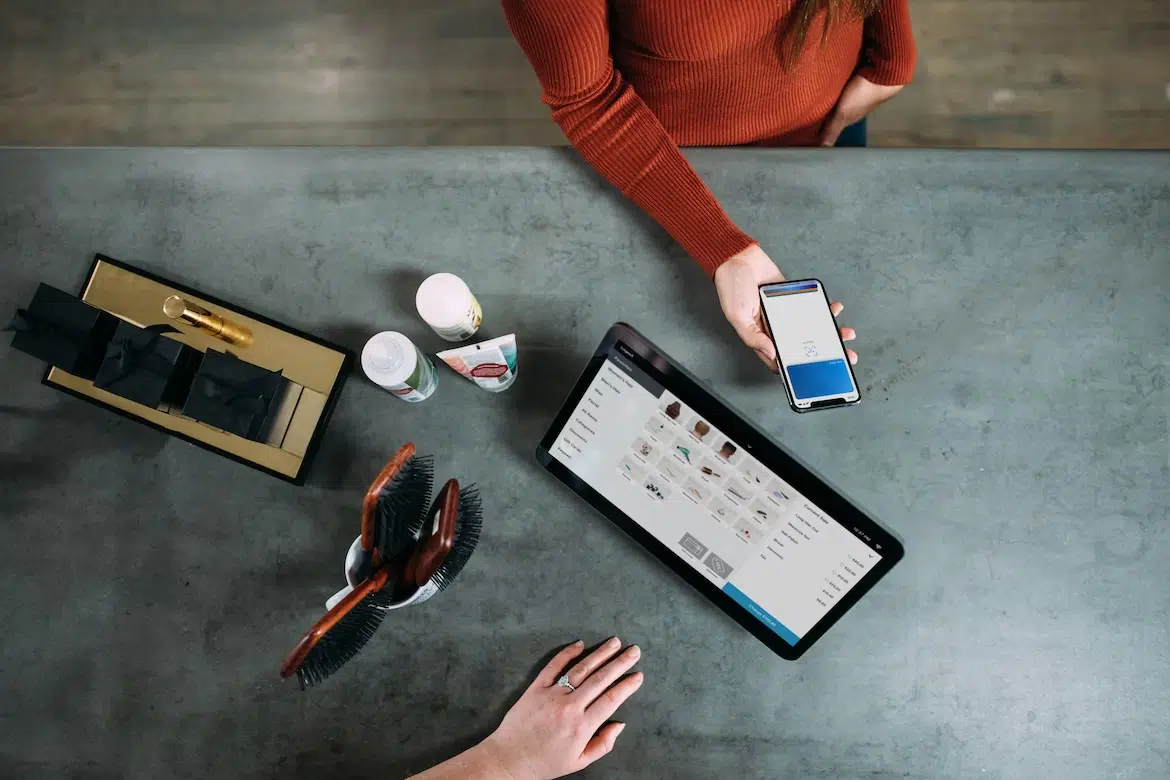Both traditional retail and online shops utilize point-of-sale (POS) terminals to process customer purchases. It used to be that stores utilized cash registers to process sales and then transmitted that data to their books and inventory lists. Modern point-of-sale (POS) software streamlines a variety of retail operations, including payments, discounts, and returns.
Connecting the POS to your other software and hardware is possible, including e-commerce sites, accounting programs, enterprise resource planning tools, and inventory management programs. Enterprise point-of-sale software should be capable of extensive integrations, customer data management, personnel management, sales reporting, inventory tracking, and mobile access. So, let’s check out some of the key components of a modern POS system and why they are beneficial for your business.
Software
The data is saved and managed by the POS system itself. Billing and order processing, sales reporting, tracking inventory, returns, analytics, mobile connection, customer data management, personnel administration, and loyalty programs are just some of the many features offered by POS software. You can visit eisol.net, as well as similar sites, as they provide a full suite of integrated software solutions for small and medium-sized enterprises (SMEs) that are intended to help them compete in the digital economy and take advantage of opportunities like the IMDA PSG award for point-of-sale systems and digital food ordering. Many point-of-sale systems include integration with other applications, including bookkeeping and accounting programs, email marketing tools, and internet storefronts.
Hardware
Any physical equipment used to accept payments from customers in a brick-and-mortar establishment is considered point-of-sale hardware. Equipment might be anything from scales to credit card readers to displays to stations to receipt printers. All of these elements work together to form input and output devices that facilitate financial transactions. A few items of point-of-sale equipment are absolutely necessary for accepting payments from customers in person and should be given priority by most firms. The quantity of gear you may require to handle consumer payments properly will usually be determined by the industry you operate in. In comparison to a grocery store or a clothes store, a restaurant has quite specific requirements, for instance.
Multistore management
Multiple locations may be administered from the same point-of-sale system. Franchises, purchasing groups, and corporate networks have unique requirements that aren’t met by the vast majority of point-of-sale (POS) systems on the market. Having a POS system that can handle many locations allows you to better organize your data and stock your shelves. It is possible to tailor multi-store management to the specific requirements of different formats of retail establishments.
This feature is very helpful for multi-store management since it drastically cuts down on administrative tasks. Every connected store will automatically update its pricing, items, and more whenever the central store makes a change. Franchises, purchasing clubs, corporate chains, and businesses looking to broaden their reach may all greatly benefit from this function.
Integrated supplier purchase
The POS system may also keep track of the orders that are placed with vendors. In order to keep the company running well, it may be required to make purchases from suppliers; doing so is also essential for effective inventory management. The POS system may be used to keep track of all of the store’s purchases in real-time.
Using a point-of-sale (POS) system that integrates with your suppliers’ systems can streamline inventory management. Having a buying feature will make it less difficult to coordinate order quantities with suppliers. This can help you lower the minimal amount of stock you need to have on hand and save money. In addition, a point-of-sale system lets you control demand by restricting purchases to what you can reasonably provide.
Integrated payment process
Finding a point-of-sale system that also has integrated payment processing helps simplify your business’s financial dealings. That’s because the POS system and payment processor can share relevant information without any manual intervention.
Without a payment processing solution, you’ll need to manually input customers’ debit and credit card details. That adds extra time and the potential for mistakes in the process of entering data for every transaction.
Employee management
You can manage your workforce more efficiently each day, which will save you both time and money, with a point-of-sale system that includes personnel management features. The system now has the capability for workers to clock in and out.
In addition, you may tailor access levels for individual employees depending on their rank and responsibilities within the firm. This method guarantees that workers only have access to the functions they need.
You don’t want to fall behind because your retail operations are still run manually. It’s time to wake up to the value of point-of-sale systems and think about making some changes.
Lucas Noah, armed with a Bachelor’s degree in Information & Technology, stands as a prominent figure in the realm of tech journalism. Currently holding the position of Senior Admin, Lucas contributes his expertise to two esteemed companies: OceanaExpress LLC and CreativeOutrank LLC. His... Read more
